Most women continue buying the same size bra, even though their size may have changed. TV shows like "What Not to Wear" and "Oprah" contend that most women are wearing the wrong size bra. For comfort and proper fit, follow these rules to determine the right size bra for you.
Band Size
The band size is your chest measurement plus four inches for overlap. Measure your chest around the ribcage, taking care to keep the tape measure level. Expel the air from your lungs and hold in your tummy to get the minimum measurement.
Bras are only available in even numbered sizes, so if the measure is odd, round your measurement up to the next even number. For example, if your measurement is 33 inches, you would round up to 34. Then add four inches for the overlap: 34 + 4 = 38. You would purchase a 38-inch band size.
Cup Size
The cup size is determined by comparing the band measurement with the chest measurement at the fullest point. Take a second measurement, wearing your best fitting bra, around the fullest part of your breast. Make sure that the tape measure stays level, especially in the back, to get a correct measurement.
Subtract this second measurement from the band measurement. The difference between the two measurements determines the cup size of your bra. Move up one size for every inch of difference. A one-inch difference is an A cup. Two inches is a B cup. Three inches is a C cup, and four inches is a D cup.
If your cup size is above a D, follow the sizing chart from the manufacturer to determine the proper cup designation. American manufacturers move from D to DD, DDD and DDDD, while European manufacturers prefer D, E, F and G. A five-inch difference is a DD or E cup. Six inches is a DDD or F cup, and a seven-inch difference would be a DDDD or G cup.
Using the figure from the example above, if the second measurement at the fullest point is 42 inches, the cup size would be D (42 - 38 = 4), resulting in size 38D. If the second measurement is 44 inches, the difference is six inches (44 - 38 = 6), so the size is 38DDD or 38F, depending on the manufacturer.
Proper Fit
A proper-fitting bra will lie flat on your rib cage, without pulling away or riding up. The band should be level around the body. If the band rides up in the back, the band size is too large; go down one size. If the band rides up in the front, the cup size is too small; go up one cup size.
Your breasts should remain in the bra at all times. If they fall out when you raise your arms, move down one band size.
The bra cup should comfortably contain the breasts with no bulging of the breasts or wrinkles in the bra.
Related Articles

How to Find the Correct Bra Size
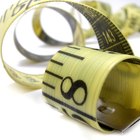
How to Measure Bust Size

How to Calculate Your Bra Size
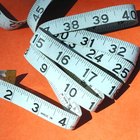
How to Measure Breast Size
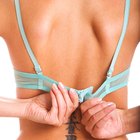
How to Measure Bra Size for Calvin ...
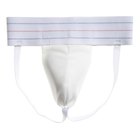
How to Find Your Jock Strap Size

Differences in Bra Cup Sizes

What Does Bust Size Mean?

How to Decrease the Padding in a Bra
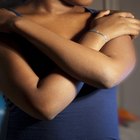
How to Measure for a Girl's First Bra ...

How to Put on a Long Line Bra

What Is the Average Breast Measurement?
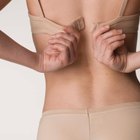
Difference Between Metric & American ...
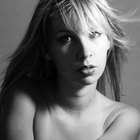
How to Measure a Strapless Bra
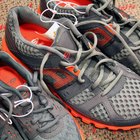
How to Compare Men's Shoe Size to Boys' ...

How to Measure a Man's Suit Size

What Is the Cup Size of Someone With a ...

What Bras Are the Best for a Big Chest ...

How to Size Boys' Clothes

Difference Between Male & Female Pants
References
Writer Bio
Diane Watkins has been writing since 1984, with experience in newspaper, newsletter and Web content. She writes two electronic newsletters and has a Bachelor of Science degree in chemistry from Clemson University. She has taken graduate courses in biochemistry and education.